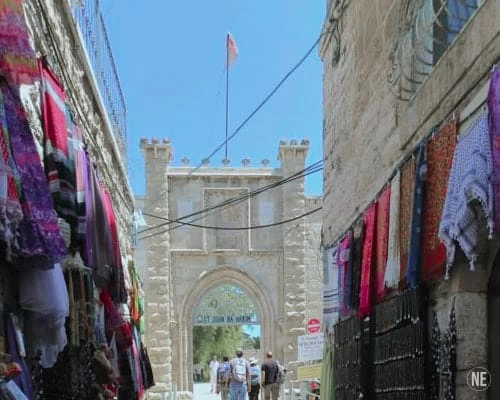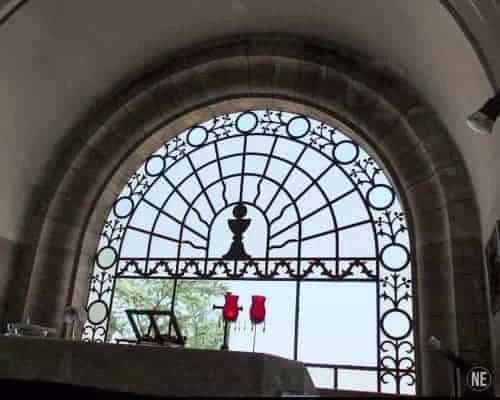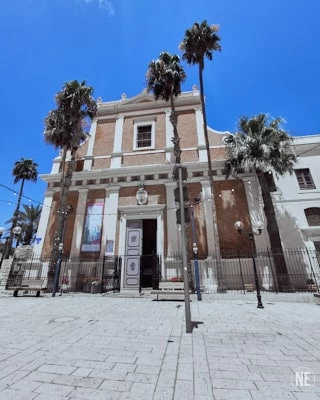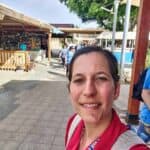The Church of “John the Baptist” is considered one of the key attractions in Ein Kerem. According to Christian tradition, it is the house where John the Baptist was born. Situated just a few minutes away from the “Visitation Church,” where Mary visited John’s mother, Elizabeth, before John and Jesus were born, it holds significant historical and religious importance.
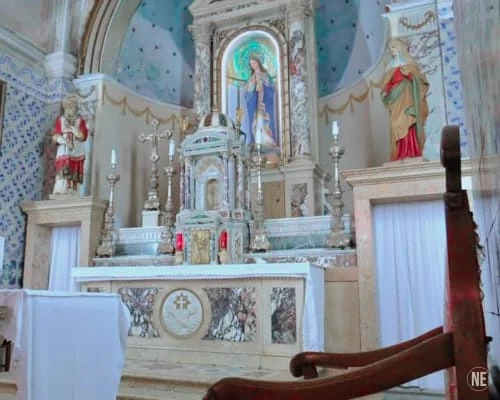
The story of the church
In Luke’s book, we can read about the story: eight days after Elizabeth gave birth, she updated her family’s name to John. The family did not understand how they could use a name that had nothing to do with the other names of their relatives. When asking Father Zechariah, he could not speak, so he wrote on a tablet, “His name is John.” only then Zechariah’s mouth was opened, and his tongue set free, and he began to thank god for his childbirth, singing a prayer. This prayer, known as the “Benedictus” or “The Song of Zechariah,” attributed to Zechariah, expresses gratitude for fulfilling God’s promises and anticipates the coming of the Messiah, who will bring salvation and forgiveness of sins to the people.
Luke 1:68-79:
“Blessed be the Lord, the God of Israel; he has come to his people and set them free. He has raised up for us a mighty Savior, born of the house of his servant David. Through his holy prophets, he promised of old that he would save us from our enemies, from the hands of all who hate us. He promised to show mercy to our fathers and to remember his holy covenant. This was the oath he swore to our Father Abraham: to set us free from the hands of our enemies, Free to worship him without fear, holy and righteous in his sight all the days of our lives. You, my child, shall be called the prophet of the Most High, for you will go before the Lord to prepare his way, To give his people knowledge of salvation by forgiving their sins. In the tender compassion of our God, the dawn from on high shall break upon us, To shine on those who dwell in darkness and the shadow of death, and to guide our feet into the way of peace.”
Inside the Church
The compound gate, erected in the late 19th century, bears two distinctive symbols. On the right, the Jerusalem cross, representing the Franciscan Church, depicts a large cross with four smaller crosses symbolizing Jesus’ wounds. On the left, the Franciscan emblem features two hands—one bare, representing Jesus, and the other with the sleeve of Saint Peter.
Among the archaeological discoveries on site is a Jewish purification bath dating back to the first century. This suggests that John the Baptist, possibly the son of a priest, was associated with this location. The church itself traces its origins to the 6th century, which Theodosius identified as a Byzantine church during his pilgrimage to Jerusalem in 530.
During the Crusades, a splendid Crusader church was erected over the Byzantine ruins, only to be destroyed upon the Crusaders’ departure. In 1621, the Franciscans acquired the church’s remains and, about 50 years later, obtained Ottoman permission to undertake renovations. The current structure, resembling the Crusader church, was ultimately renovated in the latter half of the 19th century with support from the Spanish royal house.
Entering through the courtyard, visitors are greeted by a door bearing a Greek inscription, “Peace to God’s Martyrs.” Inside, the church adopts a basilica layout, complete with a confessional and baptismal font at the entrance. The central altar in the apse is dedicated to Zechariah, Elisabeth, and Mary, relatives of Jesus.
To the left of the apse lies a descent into a cave traditionally associated with John’s birth. Above this sacred site, an altar, gifted by the Queen of Spain in 1857, commemorates the event. The church’s interior is adorned with Spanish art, including paintings by Spanish artists.
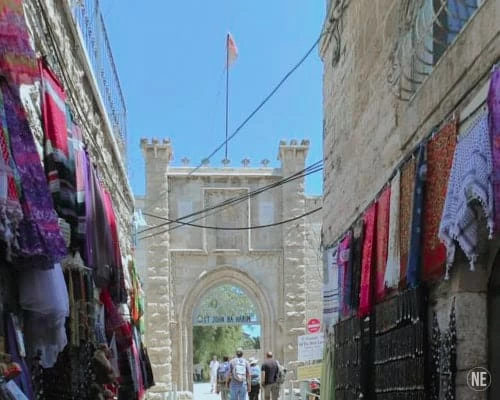
Basic information
Church name John Baharim (John in the mountains)
Address, EIN Karem
Christian Franciscan Catholic Order. The Kingdom of Spain is in charge of the structure of the church.
Arrival options
| Bus lines | Bus number 28 to Jerusalem bus station or Herzel Mountain. |
| Car | Write in the waze “Ein-Karem parking” and you will be headed directly to the free parking lot on Ein karem which is only 10 minutes walk to the church. |
Accessibility
There is a parking lot for disabled people about 100 meters from the entrance of the church. Descending to the crypt is not wheelchair accessible and there are no public toilets. Only an extension to the front door.
Opening hours 08:00-12:00 and re-opening 14:30-16:30.
Entrance is free of charge.
Phone number +972-(0)2-6413639
Public Toilets are available.
Nearby site activities
Church of visitation is only few minutes away. If time permits can a day tour in Ein-Karem and Museum in the new city of Jerusalem, such as Yad Vashem Holocaust Memorial museum, Herzel Museum or Israel Museum.
My experience
This site stands out for its fascinating archaeology, offering a glimpse into ancient history. Moreover, the infusion of Spanish art within an Israeli church adds a unique and refreshing dimension. I highly recommend pairing a visit to this church with a visit to the nearby Church of the Visitation, just a few minutes away. Ein Karem, with its pastoral charm, beckons visitors to linger longer. There is a new gorgeous trailer road that will take you to the forest called “the Ein-Karem trail,” which you must try if you are in the era. Consider staying at one of the charming hotels in the village to immerse yourself in its unique atmosphere fully. However, if time is limited, an evening visit allows you to experience the local cafes and restaurants, savoring the delicious flavors of the region.

